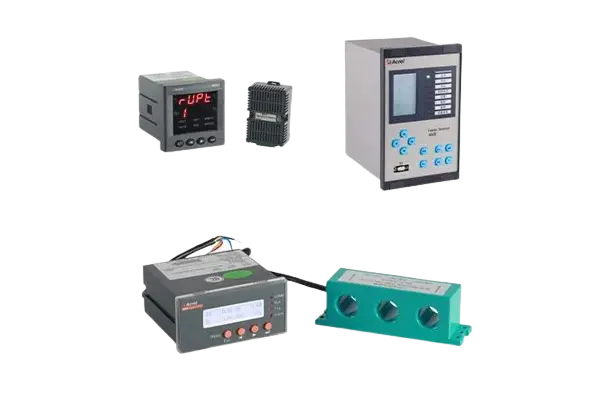

Residual Current Relay is a good protective device to prevent the above accidents. Its main function is to protect people from electric shock injuries and fatalities, and prevent electrical equipment or lines from causing fires due to excessive leakage current.
In recent years, with the development of electricity use and residential buildings, the requirements for residual current protection in low-voltage distribution lines have become higher. In many situations, it is required to install residual current alarm devices. For example, the newly revised GB 13955—2005 'Installation and Operation of Residual Current Protection Devices' clearly states that: If an electrical device or location will suffer significant economic loss and adverse social impact due to a power cut-off when the residual current exceeds the rated value, then an alarm type residual current protection device should be installed. For instance, emergency power supplies and corridor lighting in public places; equipment ensuring public safety; power supplies for fire-fighting equipment, such as fire elevators, fire pumps, and fire corridor lighting; power supplies for anti-theft alarms, etc. GB50096—1999 'Residential Design Code' stipulates that the main power supply circuit breaker of each residential building should have residual current protection function. To avoid the disconnection of the main power supply circuit causing a total power outage in all residences, generally, the design of main supply protection includes residual current alarm function.
Acrel Electric ASJ Series Residual Current Relay not only meets the requirement for leakage protection, but when used in conjunction with a remote trip switch, it can promptly cut off the power supply to prevent indirect contact and limit leakage current. It can also directly serve as a signal relay to monitor electrical equipment. It is especially suitable for schools, commercial buildings, factory workshops, marketplaces, industrial and mining enterprises, national fire protection units, smart buildings and communities, subways, petrochemicals, telecommunications, and national defense departments for safety protection.
The ASJ series products have two main installation methods: ASJ10 series for rail mounting, and ASJ20 series for panel mounting.
The difference between the AC type and A type Residual Current Relay is: The AC type Residual Current Relay ensures tripping for suddenly applied or slowly rising residual sinusoidal AC currents, mainly monitoring sinusoidal AC signals. The A type Residual Current Relay ensures tripping for suddenly applied or slowly rising residual sinusoidal AC currents and residual pulsating DC currents, mainly monitoring sinusoidal AC signals and pulsating DC signals.
All external connections of the Leakage Current Relay must be correct, otherwise false operations and failures may occur.
According to the International Electrotechnical Commission standard IEC 4.79, a 50Hz AC current passing through the human body, if not exceeding 30mA, will not cause ventricular fibrillation and death. Therefore, the leakage current settings of the Leakage Current Relay in special locations should be user-friendly.
The Residual Current Relay does not provide protection against electric shock between phase and phase or phase and neutral wire; the protected circuit must not be mixed with unprotected circuits, and the neutral protection line must not be grounded multiple times.
 English
English 日本語
日本語 한국어
한국어 français
français Deutsch
Deutsch Español
Español italiano
italiano русский
русский português
português tiếng việt
tiếng việt Türkçe
Türkçe العربية
العربية






